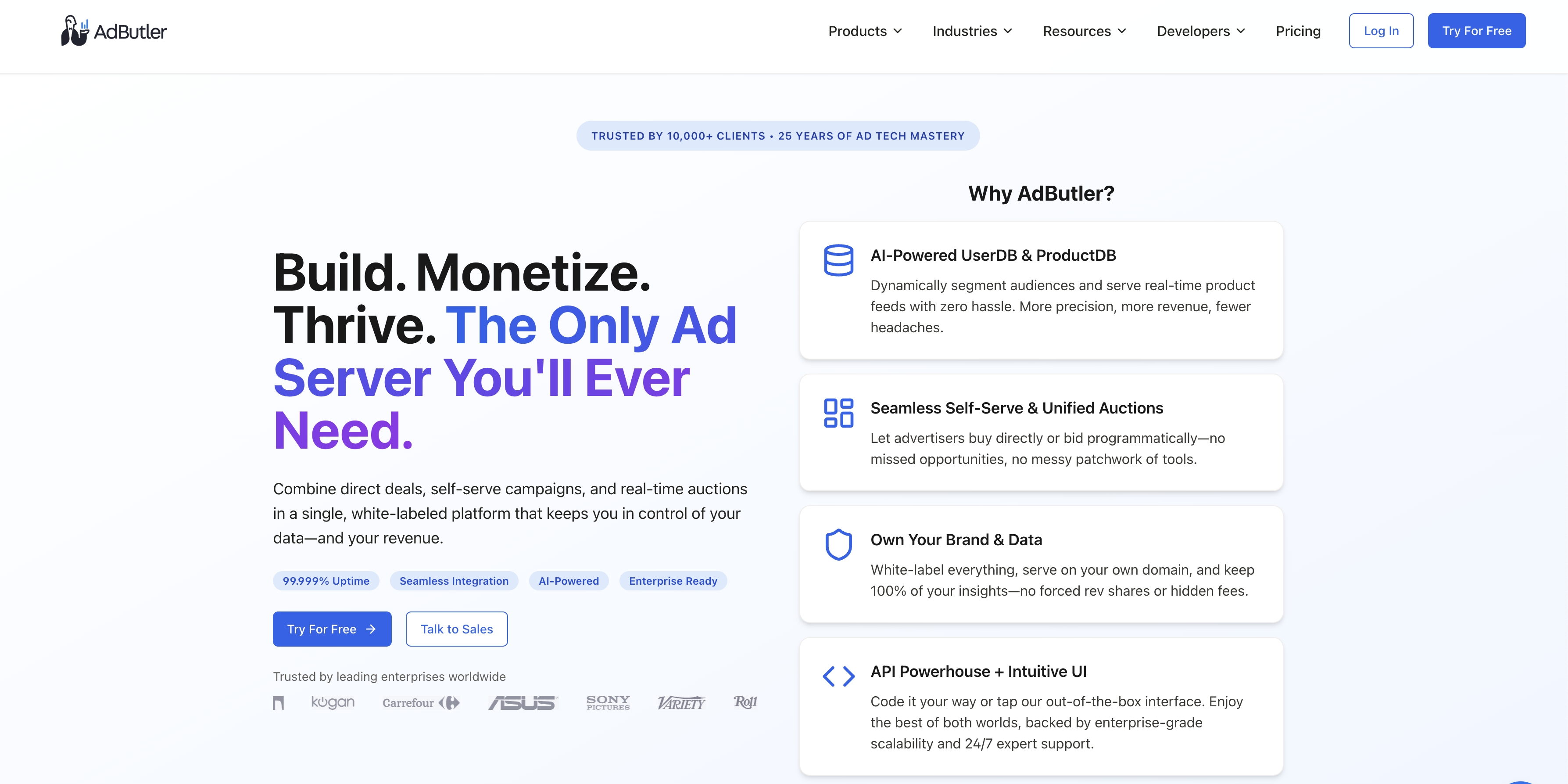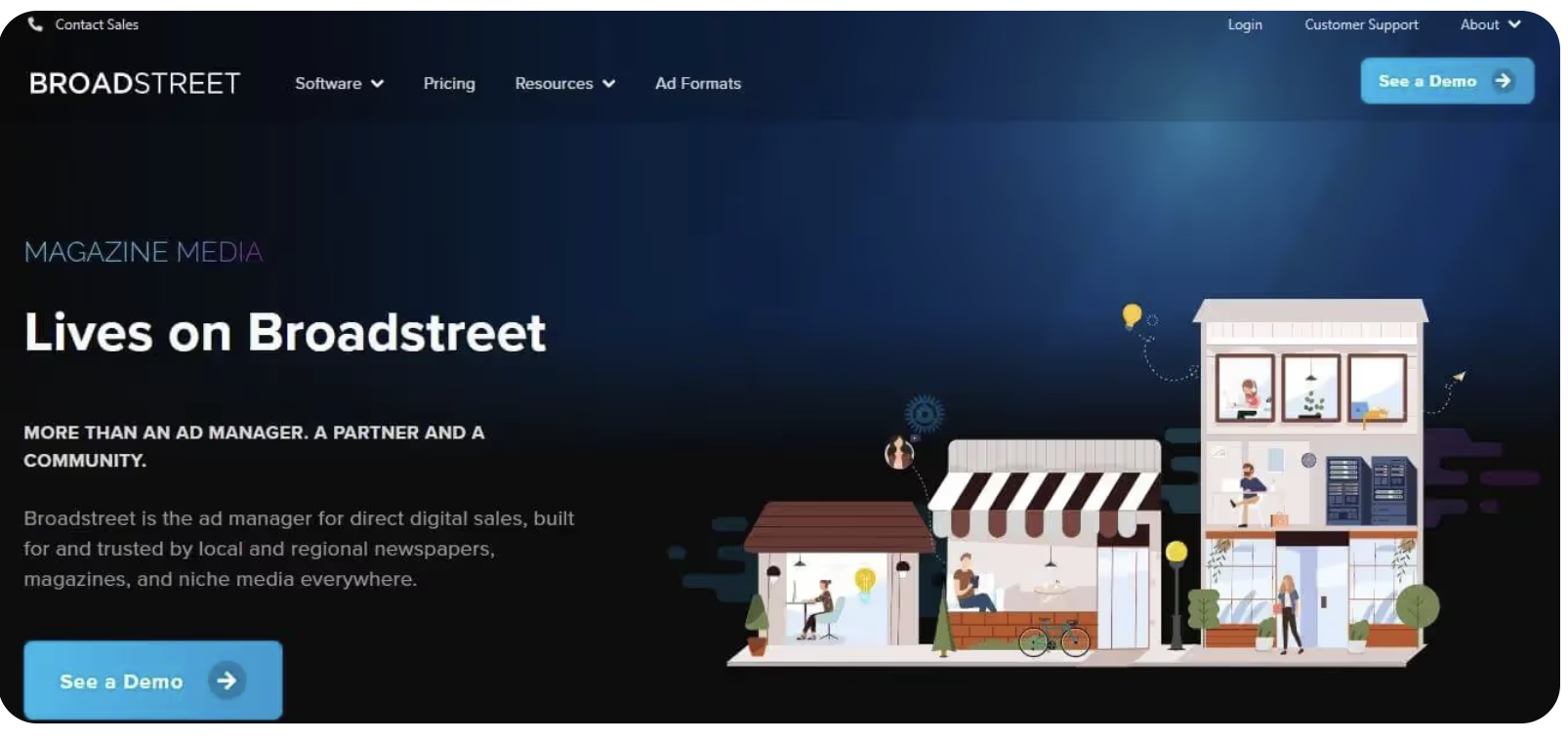
Best Ad Servers for Publishers in 2025 [Comparison Guide]
If you run a website, newsletter, or app with ad space, you’ve probably wondered: “What’s the best ad server for me in 2025?”
The answer depends on your size, your tech stack, and what matters more to you: scale, control, or flexibility.
In this guide, we’ll walk through the leading ad servers, the types of ad servers out there, and what publishers really need to know before making a choice. Think of this as your roadmap to picking the right “engine” to power your advertising.
Best Ad Servers for Publishers
Here’s a rundown of the most notable platforms in 2025.
- AdButler – The independent ad server for publishers who want control. Transparent SaaS pricing, data ownership, and flexible APIs. Easy to set up, powerful enough for both small publishers and enterprises.

Amazon Publisher Services (APS) – Direct access to Amazon demand and its Transparent Ad Marketplace (TAM). Great for retail media and scale. Less flexible outside Amazon’s ecosystem.
Kevel – An API-first platform. Perfect for teams that want to build custom ad tech, retail media, or marketplaces. Powerful, but needs developer resources.

Google Ad Manager (GAM) – The “default” choice for big publishers. Huge ecosystem, direct tie-in to AdX. But complex, slow to learn, and takes a revenue share cut.
Epom Ad Server – Flexible ad server for publishers and advertisers. Offers white-label and customizable options. Smaller brand presence than Google or Amazon, but competitive pricing.
OpenX – A veteran SSP + ad server. Strong analytics and advanced programmatic tools. Costs more than most.

Smart AdServer – Popular in Europe. Strong SSP integrations, solid ad serving. Less reach in North America.
Broadstreet – Built for local news and magazines. Simple interface, newsletter integration, and strong support. Limited advanced features.

- Revive Adserver – Free and open-source. Customizable if you have technical skills. Requires hosting, updates, and maintenance.
What Is the Best Ad Server for Publishers in 2025?
Ad servers are like vehicles. Google Ad Manager (GAM) is the giant SUV: powerful, everywhere, but not easy to maneuver.
Independent platforms like AdButler or Kevel are the sports cars and hybrids, built for publishers who want speed, flexibility, and transparent costs instead of one-size-fits-all complexity.

Types of Ad Servers in 2025
Before diving deeper, it helps to understand the types:
First-Party Ad Servers → used by publishers to manage inventory, pacing, and delivery directly.
Third-Party Ad Servers → used by advertisers to track impressions, clicks, and run creative testing.
Hosted Ad Servers → run by a vendor (easy to use, updates included, but less control).
Self-Hosted Ad Servers → installed and managed by publishers (more control, but more work).
Most publishers in 2025 choose hosted SaaS ad servers like AdButler or GAM, because they’re easier to run day-to-day.
Why Publishers Need an Ad Server in 2025
Yes, you could just run AdSense. But the right ad server gives you much more control and revenue upside. Here’s what publishers gain:
Revenue Ownership → keep more of your ad dollars instead of giving up a cut in revenue share.
Flexibility → balance direct deals, programmatic, and even in-house ads.
Forecasting Power → see accurate availability before you overbook campaigns.
Transparency & Compliance → control your data, critical in a cookieless and privacy-first world.
Better User Experience → features like ad rotation prevent banner blindness and contextual targeting improves relevance.
AdButler clients save 40% of ad ops time by consolidating direct + programmatic campaigns.
Small vs. Enterprise: Which Ad Server Fits You?
Smaller Publishers
Running a niche site or newsletter? You don’t need the complexity of GAM. You’ll benefit from an independent platform with flat pricing and simple workflows — like AdButler or Broadstreet.
Mid-Size Publishers
As traffic grows, you’ll want more flexibility. Tools like AdButler’s API integrations let you customize your ad setup without hiring a full engineering team.
Enterprise Publishers
If you’re running hundreds of millions of impressions and have a full ad ops staff, platforms like GAM or Kevel can work. But many enterprise teams still choose independents for data ownership and forecasting accuracy.
Publishers using AdButler APIs launch custom ad solutions in weeks, not months.
How Do I Choose the Right Ad Server?
Here’s a quick decision framework:
Revenue: Do I want to keep 100% of my revenue (SaaS fee) or share a cut forever (rev share)?
Complexity vs. Simplicity: Am I okay with Google-scale tools, or do I want clarity and speed?
Customization: Do I need APIs and flexibility, or just a clean UI?
Support: Do I want a partner that helps me migrate and optimize?
If you lean toward control, transparency, and predictable pricing, independent platforms like AdButler are built with you in mind.
FAQs
Q: What is the best ad server for publishers in 2025?
A: If you need scale and AdX demand, GAM is still the default. But if you care about control, transparent costs, and flexibility, independent servers like AdButler are often a better fit.
Q: What are the alternatives to Google Ad Manager?
A: Independent servers like AdButler, Kevel, Smart AdServer, Broadstreet, and OpenX all provide alternatives, with different focuses from simplicity to full API customization.
Q: Which ad server is best for small vs. enterprise publishers?
A: Small publishers need simplicity and flat pricing (AdButler, Broadstreet). Enterprises may go for GAM or Kevel, but independents often deliver better data ownership and ROI.
Q: Do small publishers really need an ad server?
A: Yes, once you outgrow AdSense. Even smaller publishers benefit from better forecasting, ad rotation, and direct deal support.
Q: Which ad server is best for video ads?
A: For heavy video, look for ad servers that support CDNs and rich media formats. AdButler and Epom both support advanced video placements.
Final Takeaway
Picking an ad server in 2025 isn’t about grabbing the biggest name, it’s about finding the platform that helps you:
Own your revenue
Simplify your workflows
Future-proof against cookies and privacy changes
Google Ad Manager might be the SUV everyone drives. But publishers who value control, transparency, and flexibility are increasingly choosing independent ad servers.